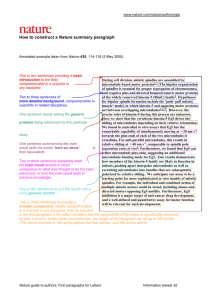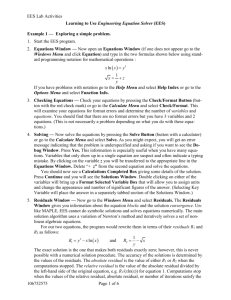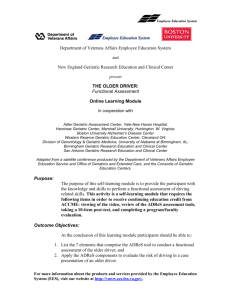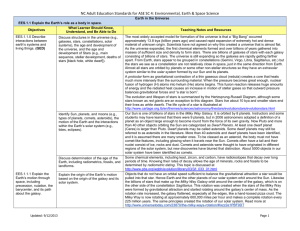ENGR-351, Engineering Thermodynamic Computational 2001
advertisement
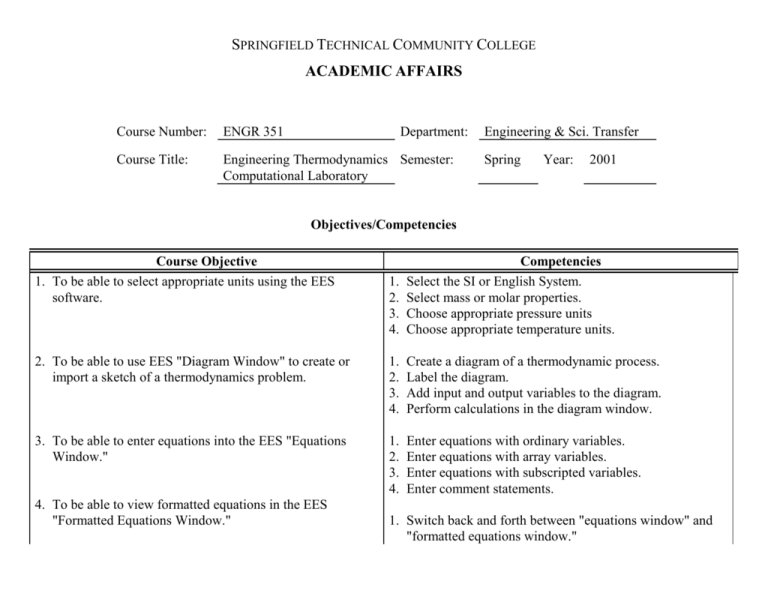
SPRINGFIELD TECHNICAL COMMUNITY COLLEGE ACADEMIC AFFAIRS Course Number: ENGR 351 Department: Course Title: Engineering Thermodynamics Semester: Computational Laboratory Engineering & Sci. Transfer Spring Year: 2001 Objectives/Competencies Course Objective 1. To be able to select appropriate units using the EES software. 1. 2. 3. 4. Competencies Select the SI or English System. Select mass or molar properties. Choose appropriate pressure units Choose appropriate temperature units. 2. To be able to use EES "Diagram Window" to create or import a sketch of a thermodynamics problem. 1. 2. 3. 4. Create a diagram of a thermodynamic process. Label the diagram. Add input and output variables to the diagram. Perform calculations in the diagram window. 3. To be able to enter equations into the EES "Equations Window." 1. 2. 3. 4. Enter equations with ordinary variables. Enter equations with array variables. Enter equations with subscripted variables. Enter comment statements. 4. To be able to view formatted equations in the EES "Formatted Equations Window." 1. Switch back and forth between "equations window" and "formatted equations window." Course Number: ENGR 351 Page 2 Course Objective Competencies 5. To be able to access Thermophysical Property information in EES. 1. Select a specific compound from a list of compounds. 2. Select a specific property from a list of properties. 3. Access additional property information from "User Library Routines" or "External Routines." 6. To be able to access Mathematical functions in EES. 1. Select a specific mathematical function from an extensive list of functions. 7. To be able to solve a thermodynamics problem with EES and view the solution in the EES "Solutions Window." 1. Set the "guess" for each variable. 2. Set the "lower and upper bounds" for each variable. 3. Select solve to access the solutions window to see results. 8. To be able to enter thermodynamic data into an EES "Parametric, Lookup, or Array Table." 1. Select the number of columns and rows and enter data into a lookup table. 2. Select the variables and the number of calculations for a parametric table. 3. Enter data for the independent variable(s) in the parametric table. 4. Calculate the values of the dependent variable in the parametric table. 5. Use Edit-Insert/Modify to enter elements into an array. 9. To be able to plot data from "Parametric, Lookup or Array Table" in EES using the "Plot Window." 1. 2. 3. 4. Select plot window and the appropriate table of data. Select the independent and dependent variables. Select a linear to logarithmic scale for each variable. Format the graph. Course Number: ENGR 351 Page 3 Course Objective 10.To be able to write "functions" and "procedures" in EES so as to solve thermodynamic problems using iterative techniques. Competencies 1. 2. 3. 4. Create a function. Call a function. Create a procedure. Call a procedure. 11.To be able to add a thermodynamic property plot in EES so 1. Select a specific property plot for a specific compound as to be able to visually view the path or process between from a list of compounds and property plots. equilibrium states. 2. Choose to include lines of constant selected properties. 3. Overlay a plot of thermodynamic array variables representing equilibrium state data on the property plot.




